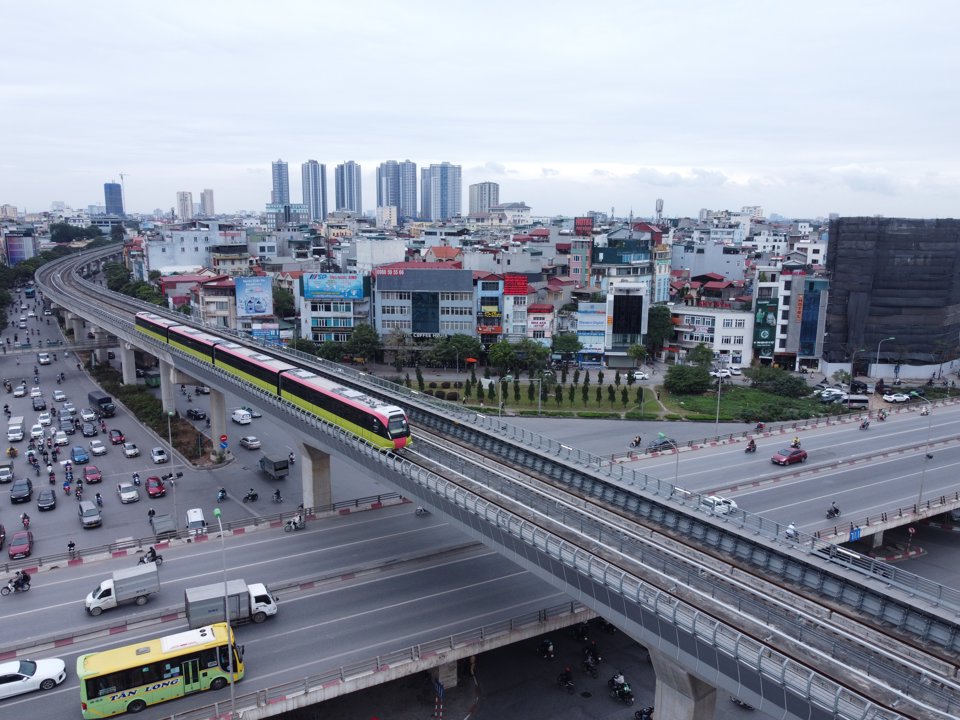Public investment as catalyst for Vietnam’s economic recovery in 2023: ADB
Accelerated government spending is expected to boost demand in the remaining months of the year.
ADB’s Principal Country Economist Nguyen Ba Hung shared his thoughts on Vietnam’s economic performance and its prospects for 2023 with The Hanoi Times.
| ADB’s Principal Country Economist Nguyen Ba Hung. |
What is the primary obstacle confronting Vietnam's economy for the remainder of the year?
In the first half of 2023, Vietnam experienced a slowdown in GDP growth, with growth projected at only 3.7% compared to the positive momentum seen last year, when GDP grew 6.5% in the first half and 9.5% in the second half, resulting in an annual growth rate of 8% for the whole of 2022.
One factor contributing to GDP growth in recent years has been public investment's sustained and steady growth.
However, significant internal challenges have emerged during the Covid-19 pandemic. Vietnam's economy heavily relies on exports and foreign direct investment (FDI) enterprises, which could pose risks shortly.
Additionally, there are concerns about the stability of water resources, which are essential for agriculture. Vietnam is experiencing a trend towards El Nino, resulting in decreased rainfall. This has a detrimental impact on labor-intensive agricultural activities and is likely to reduce agricultural output. Given these challenges, it is imperative to prioritize efforts to improve water resources and create a more balanced irrigation system to support the agricultural sector.
What, in your view, are the necessary steps the Government should take to tackle these challenges?
Looking at the data for July and August, we observe a positive shift in the economy. In the short term, there are limited factors that can significantly alter economic conditions. However, among those, government spending plays a pivotal role due to its ability to provide proactive support swiftly and effectively. Public investment is identified as the primary catalyst for economic recovery and growth in 2023. The Government has committed to spending approximately $30 billion this year.
In recent months, a strong political commitment has led to a notable improvement in disbursement activities despite lingering legal constraints. During the first eight months of 2023, nearly 50.0% of the annual public investment disbursement plan has been executed, marking a significant increase from the 33.0% achieved by the end of June 2023. The acceleration in government spending is anticipated to stimulate demand in the year's remaining months.
Furthermore, Government spending is crucial to support social security, especially for low-income groups who have been adversely affected by the unfavorable economic environment.
In terms of economic structure, Vietnam is undergoing a rapid transition, with a significant share of the service sector. Even a modest growth in the service industry can result in a different economic landscape. While the industrial sector, although not insignificant, is currently heavily reliant on exports, the decline in industry can affect GDP but remains manageable. Agriculture now contributes only around 10% to the economy, and changes in this sector have a limited impact on the overall economy.
75% of exports come from FDI enterprises, while only 25% come from domestically invested firms, which is noteworthy. Moreover, domestically produced "made in Vietnam" goods are relatively limited.
To address these challenges, the focus continues to be on solutions that support businesses, enhance the business environment, reduce operating costs, and incentivize investment in strategic sectors.
Many countries are embracing clean and green economic policies. The green economy, in particular, relies on government funding. While the private renewable energy sector has made significant strides, the government is currently providing subsidies through favorable electricity purchase prices. However, other industries, such as water treatment and those related to sustainable agriculture, require budgetary support, as they may not generate sufficient revenue for businesses to operate independently. To foster the development of these industries, government funding is a critical initial source of support.
| The Cat Linh - Ha Dong urban railway project in Hanoi. Photo: Hai Linh/The Hanoi Times |
What are your projections for the future trends in foreign direct investment (FDI) inflows, and what strategies can be employed to attract high-quality FDI inflows?
In recent years, Vietnam has emerged as a highly sought-after destination for FDI in the region, owing to its skilled workforce and favorable geopolitical conditions. While FDI is not the primary driver of the economy, export-oriented FDI plays a significant role in propelling economic growth.
The concept of "reshoring" or relocating production back to the investor's home country is gaining traction. This shift in FDI dynamics is not due to Vietnam losing its attractiveness but rather reflects evolving investor objectives. Consequently, capital flows into Vietnam may not be as large as in the past.
Moreover, it's important to acknowledge the country's internal challenges. While macroeconomic policies are generally favorable and on the right track, issues such as business environment, administrative management, and business costs are pivotal. These factors represent significant bottlenecks that the government can address to foster a more conducive business climate, in line with its current growth objectives.
To address these challenges, particular emphasis should be placed on reforming the business environment and enhancing infrastructure. These efforts can help reduce the overall cost of doing business, making Vietnam more attractive for investment.
Additionally, the government should implement supportive policies to facilitate the development of Vietnamese businesses that can integrate into the supply chains of FDI enterprises operating in Vietnam. For instance, FDI firms often rely on imports for various inputs. By gradually enabling domestic enterprises to fulfill these requirements and reduce direct imports, the business environment can become more conducive. Notably, a significant portion of Vietnam's imports, up to 96%, are raw materials for export.
What potential benefits of US-Vietnam economic and trade relations following the elevation to a Comprehensive Strategic Partnership? And how do you view the recent fluctuations in trade between Vietnam and China?
The overarching strategy aims to boost external demand and support export growth, not limited solely to the US. The government has expended considerable efforts in cultivating relations with numerous countries, with the US being a prominent partner, albeit not the exclusive one.
However, it's essential to acknowledge that each bilateral or multilateral relationship is unique, and the US, like other nations, may not always align precisely with Vietnam's objectives. For example, the US has an interest in bringing manufacturing back to the country, which can influence its investments in Vietnam. In reality, investment decisions are driven by market mechanisms and the subjective calculations of businesses, not solely by government advice.
Another aspect to consider is that while foreign businesses may enter Vietnam to capitalize on its low labor costs and tax benefits, their choice of materials and supply chains may not necessarily align with Vietnam's interests. The challenge is to build mutually beneficial connections that meet the needs and goals of both sides.
At their core, all relationships involve mutual commitment. For Vietnam to export goods to the US, it must also commit to purchasing American goods and creating favorable conditions for US businesses operating in Vietnam.
Regarding trade development with China, it's crucial to analyze the nature of the issue. China is both a significant supplier and a sizable customer. While Vietnam has a trade deficit with China, it also exports a substantial amount of goods to the neighboring country. Vietnam imports raw materials from China, both for export and domestic consumption. The trade dynamics between Vietnam and the US or Vietnam and China have different characteristics. The strategic factor often observed in US-China relations differs from the nuanced approach Vietnam takes to balance its economic relationships with different partners.
Expecting more ambitious projects with Hanoi "The Asian Development Bank (ADB) has a long history of cooperation with Hanoi. One of the key joint projects underway is the construction of metro line No.3, connecting Nhon and Hanoi Station, which is a major focus for both parties. Looking ahead, there is a shared aspiration to undertake projects with a more substantial impact on the city's development. This includes areas such as urban development, renewable energy initiatives, and environmental sustainability efforts, all aimed at realizing the vision of transforming the capital into a highly liveable city. Furthermore, Hanoi has emerged as a leading city in the implementation of government initiatives, notably in the realms of digitalization and green growth, which are closely aligned with ADB's cooperation priorities. Consequently, the potential for collaboration between the two entities remains wide open and promising," said Hung. |













